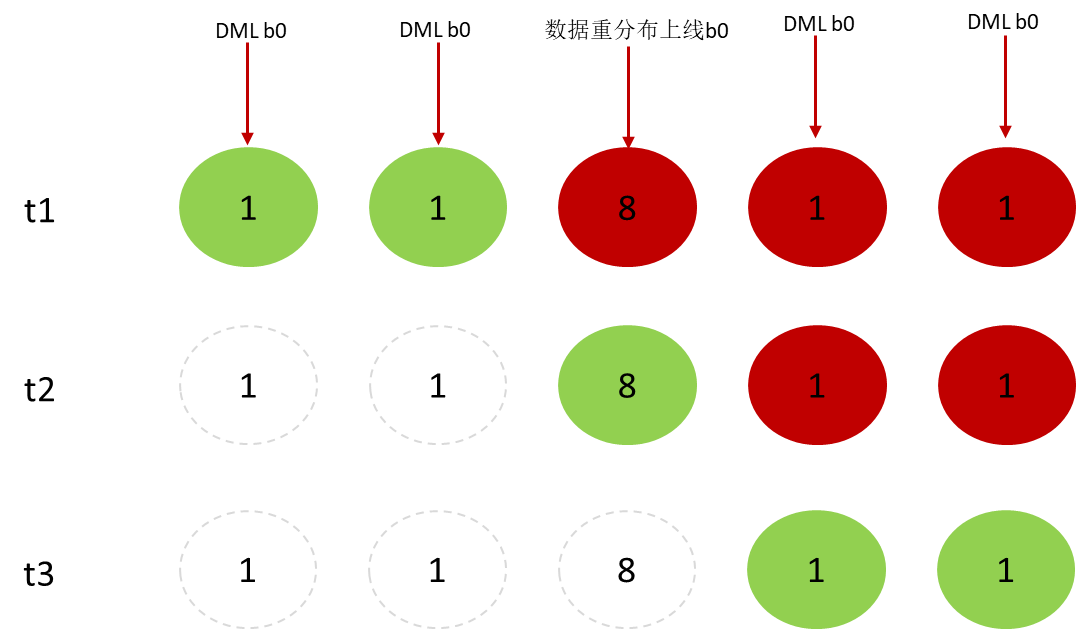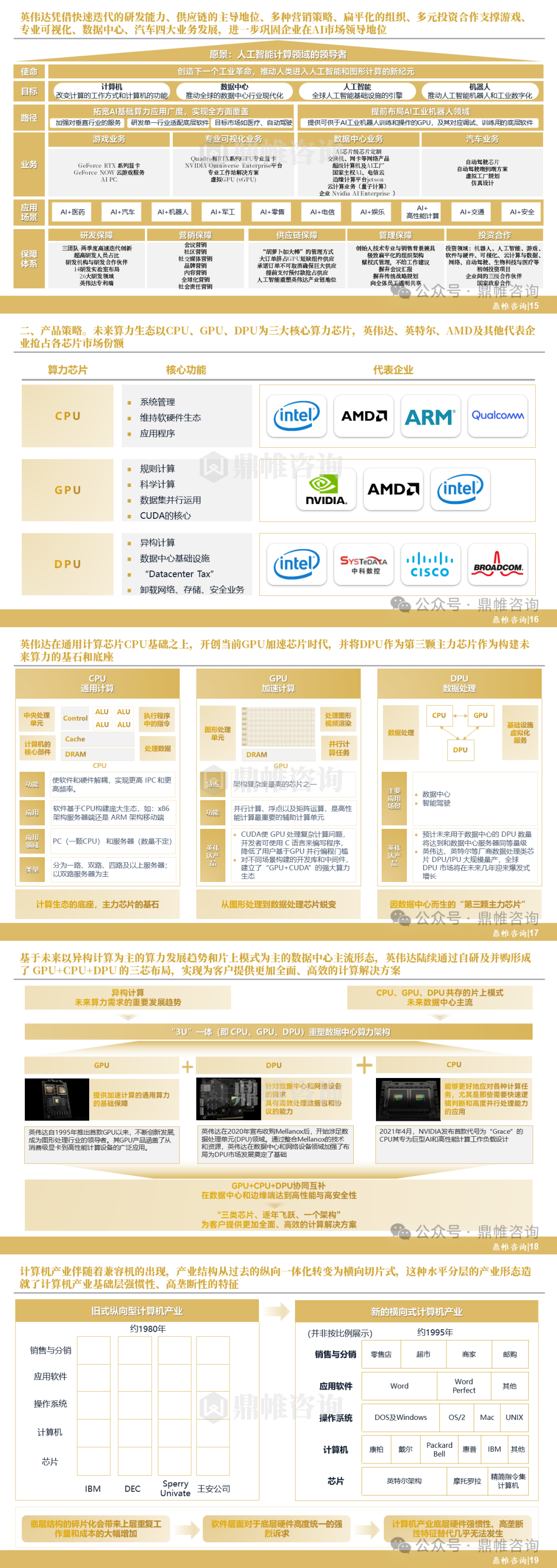目录
1. 二叉搜索树实现
1.1 二叉搜索树概念
2.2 二叉搜索树操作
编辑
编辑
2.3 二叉搜索树的实现
2.3.0 Destroy() + 析构
2.3.1 Insert()插入
2.3.2 InOrder() 打印搜索二叉树
编辑编辑
2.3.3 Find() 查找
2.3.4 Erase() 删除
编辑
编辑
编辑
2.3.5 完整代码
3. ⼆叉搜索树key和key/value使⽤场景
3.1 key搜索场景:
3.2 key/value搜索场景:
1. 二叉搜索树实现
1.1 二叉搜索树概念
二叉搜索树又称二叉排序树,它或者是一棵空树,或者是具有以下性质的二叉树:
- 若它的左子树不为空,则左子树上所有节点的值都小于根节点的值
- 若它的右子树不为空,则右子树上所有节点的值都大于根节点的值
- 它的左右子树也分别为二叉搜索树

2.2 二叉搜索树操作
int a[] = {8, 3, 1, 10, 6, 4, 7, 14, 13};1. 二叉搜索树的查找
- a、从根开始比较,查找,比根大则往右边走查找,比根小则往左边走查找。
- b、最多查找高度次,走到到空,还没找到,这个值不存在。
2. 二叉搜索树的插入
插入的具体过程如下:
- a. 树为空,则直接新增节点,赋值给root指针
- b. 树不空,按二叉搜索树性质查找插入位置,插入新节点

1. **二叉搜索树的删除
首先查找元素是否在二叉搜索树中,如果不存在,则返回, 否则要删除的结点可能分下面四种情
况:
- a. 要删除的结点无孩子结点
- b. 要删除的结点只有左孩子结点
- c. 要删除的结点只有右孩子结点
- d. 要删除的结点有左、右孩子结点
看起来有待删除节点有4中情况,实际情况a可以与情况b或者c合并起来,因此真正的删除过程
如下:
- 情况b:删除该结点且使被删除节点的双亲结点指向被删除节点的左孩子结点--直接删除
- 情况c:删除该结点且使被删除节点的双亲结点指向被删除结点的右孩子结点--直接删除
- 情况d:在它的右子树中寻找中序下的第一个结点(关键码最小),用它的值填补到被删除节点
- 中,再来处理该结点的删除问题--替换法删除
2.3 二叉搜索树的实现
#pragma once
template<class K>
struct BSTNode
{
K _key;
BSTNode<K>* _left;
BSTNode<K>* _right;
BSTNode(const K& key)
:_key(key)
, _left(nullptr)
, _right(nullptr)
{}
};
template<class K>
class BSTree
{
using Node = BSTNode<K>;//等价于 typedef BsTNode<K>;
public:
bool Insert(const K& key)
{
}
private:
Node* _root = nullptr;
};2.3.0 Destroy() + 析构
void Destroy(Node* root)
{
if (root == nullptr)
return;
Destroy(root->_left);
Destroy(root->_right);
delete root;
} ~BSTree()
{
Destroy(_root);
_root = nullptr;
}2.3.1 Insert()插入
插⼊的具体过程如下:
- 1. 树为空,则直接新增结点,赋值给root指针
- 2. 树不空,按⼆叉搜索树性质,插入值比当前结点大往右走,插入值比当前结点小往左走,找到空位
- 置,插入新结点。
- 3. 如果支持插⼊相等的值,插入值跟当前结点相等的值可以往右走,也可以往左走,找到空位置,插入新结点。(要注意的是要保持逻辑⼀致性,插入相等的值不要一会往右走,一会往左⾛)

bool Insert(const K& key)
{
if (_root == nullptr)
{
_root = new Node(key);
}
Node* parent = nullptr;
Node* cur = _root;
//用parent找到满足搜索二叉树的节点进行插入
//cur负责查找位置
//像这种的逻辑上连续,物理上不连续的链式结构一般都用双指针解决
while (cur)
{
if (cur->_key < key)
{
parent = cur;
cur = cur->_right;
}
else if (cur->_key > key)
{
parent = cur;
cur = cur->_left;
}
else
{
return false;
}
}
cur = new Node(key);
if (parent->_key < key)
{
parent->_right = cur;
}
else
{
parent->_left = cur;
}
return true;
}2.3.2 InOrder() 打印搜索二叉树
//提供Get()函数,访问内部私有函数
void InOrder()
{
_InOrder( _root);
}
private:
void _InOrder(Node* root)
{
if (root == nullptr)
{
return;
}
_InOrder(root->_left);
cout << root->_key << " ";
_InOrder(root->_right);
}测试用例
#include"FileName.h"
int main()
{
BSTree<int> t;
int a[] = { 8,3,1,10,1,6,4,7,14,13 };
for (auto e : a)
{
t.Insert(e);
}
t.InOrder();
return 0;
}2.3.3 Find() 查找
- 1. 从根开始比较,查找x,x比根的值大则往右边走查找,x比根值小则往左边走查找。
- 2. 最多查找高度次,走到到空,还没找到,这个值不存在。
- 3. 如果不支持插入相等的值,找到x即可返回
- 4. 如果支持插入相等的值,意味着有多个x存在,一般要求查找中序的第一个x。如下图,查找3,要找到1的右孩子的那个3返回

bool Find(const K& key)
{
Node* cur = _root;
while (cur)
{
if (cur->_key < key)
{
cur = cur->_right;
}
else if (cur->_key > key)
{
cur = cur->_left;
}
else
{
return true;
}
}
return false;
}2.3.4 Erase() 删除
首先查找元素是否在二叉搜索树中,如果不存在,则返回false。
如果查找元素存在则分以下四种情况分别处理:(假设要删除的结点为N)
- 1. 要删除结点N左右孩子均为空
- 2. 要删除的结点N左孩子位空,右孩子结点不为空
- 3. 要删除的结点N右孩子位空,左孩子结点不为空
- 4. 要删除的结点N左右孩子结点均不为空
对应以上四种情况的解决方案:
1. 把N结点的父亲对应孩子指针指向空,直接删除N结点(情况1可以当成2或者3处理,效果是一样的)

2. 把N结点的父亲对应孩子指针指向N的右孩子,直接删除N结点
3. 把N结点的父亲对应孩子指针指向N的左孩子,直接删除N结点
4. 无法直接删除N结点,因为N的两个孩子无处安放,只能用替换法删除。找N左子树的值最大结点
R(最右结点)或者N右子树的值最小结点R(最左结点)替代N,因为这两个结点中任意⼀个,放到N的
位置,都满足二叉搜索树的规则。替代N的意思就是N和R的两个结点的值交换,转而变成删除R结
点,R结点符合情况2或情况3,可以直接删除。
bool Erase(const K& key)
{
Node* parent = _root;
Node* cur = _root;
while (cur)
{
if (cur->_key < key)
{
cur = cur->_right;
}
else if (cur->_key > key)
{
cur = cur->_left;
}
else
{
//删除
if (cur->_left == nullptr)
{
if(cur ==_root)
{
_root = cur->_right;
}
else {
if (parent->_left == cur)
{
parent->_left = cur->_right;
}
else
{
parent->_right = cur->_right;
}
}
delete cur;
}
else if(cur->_right==nullptr) //右为空
{
if (cur == _root)
{
_root = cur->_left;
}
else {
if (parent->_left == cur)
{
parent->_left = cur->_left;
}
else
{
parent->_right = cur->_left;
}
}
delete cur;
}
else
{
右子树的最左节点
Node* repalace = cur->_right;
Node* repalaceParent = nullptr;
while (repalace->_left)
{
repalaceParent = repalace;
repalace = repalace->_left;
}
cur->_key = repalace->_key;
repalaceParent->_left = repalace->_right;
delete repalace;
}
return true;
}
}
}测试用例
#include"FileName.h"
int main()
{
BSTree<int> t;
int a[] = { 8,3,1,10,1,6,4,7,14,13 };
for (auto e : a)
{
t.Insert(e);
}
t.InOrder();
t.Erase(3);
cout << endl;
t.InOrder();
return 0;
}2.3.5 完整代码
#pragma once
#include<iostream>
using namespace std;
template<class K>
struct BSTNode
{
K _key;
BSTNode<K>* _left;
BSTNode<K>* _right;
BSTNode(const K& key)
:_key(key)
, _left(nullptr)
, _right(nullptr)
{}
};
template<class K>
class BSTree
{
using Node = BSTNode<K>;//等价于 typedef Node BsTNode<K> ;
public:
~BSTree()
{
Destroy(_root);
_root = nullptr;
}
bool Insert(const K& key)
{
if (_root == nullptr)
{
_root = new Node(key);
return true;
}
Node* parent = nullptr;
Node* cur = _root;
//用parent找到满足搜索二叉树的节点进行插入
//cur负责查找位置
//像这种的逻辑上连续,物理上不连续的链式结构一般都用双指针解决
while (cur)
{
if (cur->_key < key)
{
parent = cur;
cur = cur->_right;
}
else if (cur->_key > key)
{
parent = cur;
cur = cur->_left;
}
else//元素已在树中
{
return false;
}
}
cur = new Node(key);
if (parent->_key < key)
{
parent->_right = cur;
}
else
{
parent-> _left= cur;
}
return true;
}
//提供Get()函数,访问内部私有函数
void InOrder()
{
_InOrder( _root);
}
bool Find(const K& key)
{
Node* cur = _root;
while (cur)
{
if (cur->_key < key)
{
cur = cur->_right;
}
else if (cur->_key > key)
{
cur = cur->_left;
}
else
{
return true;
}
}
return false;
}
bool Erase(const K& key)
{
Node* parent = _root;
Node* cur = _root;
while (cur)
{
if (cur->_key < key)
{
cur = cur->_right;
}
else if (cur->_key > key)
{
cur = cur->_left;
}
else
{
//删除
if (cur->_left == nullptr)
{
if(cur ==_root)
{
_root = cur->_right;
}
else {
if (parent->_left == cur)
{
parent->_left = cur->_right;
}
else
{
parent->_right = cur->_right;
}
}
delete cur;
}
else if(cur->_right==nullptr) //右为空
{
if (cur == _root)
{
_root = cur->_left;
}
else {
if (parent->_left == cur)
{
parent->_left = cur->_left;
}
else
{
parent->_right = cur->_left;
}
}
delete cur;
}
else
{
右子树的最左节点
Node* repalace = cur->_right;
Node* repalaceParent = nullptr;
while (repalace->_left)
{
repalaceParent = repalace;
repalace = repalace->_left;
}
cur->_key = repalace->_key;
repalaceParent->_left = repalace->_right;
delete repalace;
}
return true;
}
}
}
private:
void Destroy(Node* root)
{
if (root == nullptr)
return;
Destroy(root->_left);
Destroy(root->_right);
delete root;
}
void _InOrder(Node* root)
{
if (root == nullptr)
{
return;
}
_InOrder(root->_left);
cout << root->_key << " ";
_InOrder(root->_right);
}
private:
Node* _root = nullptr;
};3. ⼆叉搜索树key和key/value使⽤场景
3.1 key搜索场景:
只有key作为关键码,结构中只需要存储key即可,关键码即为需要搜索到的值,搜索场景只需要判断key在不在。key的搜索场景实现的⼆叉树搜索树支持增删查,但是不支持修改,修改key破坏搜索树结构了。
场景1:小区无人值守车库,小区车库买了车位的业主车才能进小区,那么物业会把买了车位的业主的车牌号录入后台系统,车辆进入时扫描车牌在不在系统中,在则抬杆,不在则提示非本小区车辆,无法进⼊。
场景2:检查一篇英文文章单词拼写是否正确,将词库中所有单词放入二叉搜索树,读取文章中的单词,查找是否在⼆叉搜索树中,不在则波浪线标红提⽰。

3.2 key/value搜索场景:
每⼀个关键码key,都有与之对应的值value,value可以任意类型对象。树的结构中(结点)除了需要存储key还要存储对应的value,增/删/查还是以key为关键字走二叉搜索树的规则进行比较,可以快速查找到key对应的value。key/value的搜索场景实现的二叉树搜索树支持修改,但是不支持修改key,修改key破坏搜索树结构了,可以修改value。
场景1:简单中英互译字典,树的结构中(结点)存储key(英文)和vlaue(中文),搜索时输入英文,则同时查找到了英文对应的中文。
场景2:商场无人值守车库,入口进场时扫描车牌,记录车牌和入场时间,出口离场时,扫描车牌,查找入场时间,⽤当前时间-入场时间计算出停车时长,计算出停车费用,缴费后抬杆,车辆离场。
场景3:统计一篇文章中单词出现的次数,读取⼀个单词,查找单词是否存在,不存在这个说明第一次出现,(单词,1),单词存在,则++单词对应的次数。

查字典
#pragma once
#include<iostream>
using namespace std;
namespace key {
template<class K, class V>
struct BSTNode
{
K _key;
V _value;
BSTNode<K, V>* _left;
BSTNode<K, V>* _right;
BSTNode(const K& key, const V& value)
:_key(key)
, _value(value)
, _left(nullptr)
, _right(nullptr)
{}
};
template<class K, class V>
class BSTree
{
using Node = BSTNode<K, V>;//等价于 typedef Node BsTNode<K> ;
public:
//强制生成构造
BSTree() = default;
BSTree(const BSTree& t)
{
_root = Copy(t._root);
}
BSTree& operator=(BSTree tmp)
{
swap(_root, tmp._root);
return *this;
}
Node* Copy(Node* root)
{
if (root == nullptr)
return nullptr;
Node* newRoot = new Node(root->_key, root->_value);
newRoot->_left = Copy(root->_left);
newRoot->_right = Copy(root->_right);
return newRoot;
}
~BSTree()
{
Destroy(_root);
_root = nullptr;
}
bool Insert(const K& key,const V& _value)
{
if (_root == nullptr)
{
_root = new Node(key,_value);
return true;
}
Node* parent = nullptr;
Node* cur = _root;
//用parent找到满足搜索二叉树的节点进行插入
//cur负责查找位置
//像这种的逻辑上连续,物理上不连续的链式结构一般都用双指针解决
while (cur)
{
if (cur->_key < key)
{
parent = cur;
cur = cur->_right;
}
else if (cur->_key > key)
{
parent = cur;
cur = cur->_left;
}
else//元素已在树中
{
return cur;
}
}
cur = new Node(key,_value);
if (parent->_key < key)
{
parent->_right = cur;
}
else
{
parent->_left = cur;
}
return true;
}
//提供Get()函数,访问内部私有函数
void InOrder()
{
_InOrder(_root);
}
Node* Find(const K& key)
{
Node* cur = _root;
while (cur)
{
if (cur->_key < key)
{
cur = cur->_right;
}
else if (cur->_key > key)
{
cur = cur->_left;
}
else
{
return cur;
}
}
return nullptr;
}
bool Erase(const K& key)
{
Node* parent = _root;
Node* cur = _root;
while (cur)
{
if (cur->_key < key)
{
cur = cur->_right;
}
else if (cur->_key > key)
{
cur = cur->_left;
}
else
{
//删除
if (cur->_left == nullptr)
{
if (cur == _root)
{
_root = cur->_right;
}
else {
if (parent->_left == cur)
{
parent->_left = cur->_right;
}
else
{
parent->_right = cur->_right;
}
}
delete cur;
}
else if (cur->_right == nullptr) //右为空
{
if (cur == _root)
{
_root = cur->_left;
}
else {
if (parent->_left == cur)
{
parent->_left = cur->_left;
}
else
{
parent->_right = cur->_left;
}
}
delete cur;
}
else
{
右子树的最左节点
Node* repalace = cur->_right;
Node* repalaceParent = nullptr;
while (repalace->_left)
{
repalaceParent = repalace;
repalace = repalace->_left;
}
cur->_key = repalace->_key;
repalaceParent->_left = repalace->_right;
delete repalace;
}
return true;
}
}
}
private:
void Destroy(Node* root)
{
if (root == nullptr)
return;
Destroy(root->_left);
Destroy(root->_right);
delete root;
}
void _InOrder(Node* root)
{
if (root == nullptr)
{
return;
}
_InOrder(root->_left);
cout << root->_key << ":" << _root->_value << endl;
_InOrder(root->_right);
}
private:
Node* _root = nullptr;
};
}#include"FileName.h"
int main()
{
key::BSTree<string, string> dict;
//BSTree<string, string> copy = dict;
dict.Insert("left", "左边");
dict.Insert("right", "右边");
dict.Insert("insert", "插⼊");
dict.Insert("string", "字符串");
string str;
while (cin >> str)
{
auto ret = dict.Find(str);
if (ret)
{
cout << "->" << ret->_value << endl;
}
else
{
cout << "无此单词,请重新输入" << endl;
}
}
return 0;
}
查水果数量
#include"FileName.h"
int main()
{
string arr[] = { "苹果", "西瓜", "苹果", "西瓜", "苹果", "苹果", "西瓜",
"苹果", "香蕉", "苹果", "香蕉" };
key::BSTree<string, int> countTree;
for (const auto& str : arr)
{
// 先查找⽔果在不在搜索树中
// 1、不在,说明⽔果第⼀次出现,则插⼊<⽔果, 1>
// 2、在,则查找到的结点中⽔果对应的次数++
//BSTreeNode<string, int>* ret = countTree.Find(str);
auto ret = countTree.Find(str);
if (ret == NULL)
{
countTree.Insert(str, 1);
}
else
{
ret->_value++;
}
}
countTree.InOrder();
return 0;
}












![edu某智慧平台 ExpDownloadService.aspx接口任意文件读取漏洞复现 [附POC]](https://i-blog.csdnimg.cn/direct/bbc019ff343c4c33bd2b5202fc6cc7d2.png)





![[Linux]:线程(一)](https://img-blog.csdnimg.cn/img_convert/a276edd3627f125a7a44b0aee3f7314c.png)






